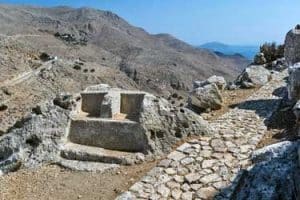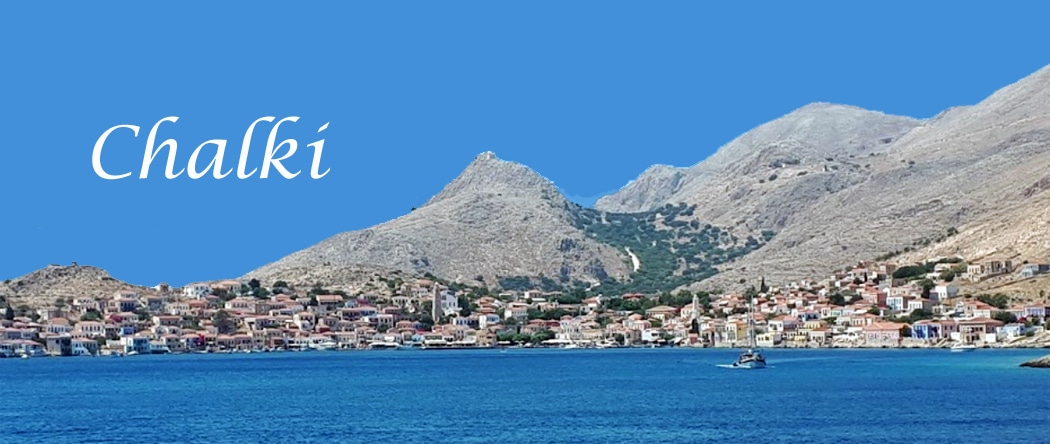Brief history of the Greek island of Halki

Halki, although it belonged to the city state of Kamiros of Rhodes, in the 5th c. BC appears in history for the first time as an independent city participating in the Athenian alliance, which is confirmed by the tax lists of the First Athenian Alliance of 478/477 BC. In Thucydides’ recounting of the events of the Peloponnesian War , the port of Chalkis plays an important role in the events of 412/411 BC as a refuge and base for the Athenian fleet against the Rhodians, when the latter allied themselves with the Lacedaemonians.
In the 4th century Halki experienced a brief period of independence. Its heyday is reflected in the important finds in the classical necropolis of Pontamos, which testify to relations with Athens, Rhodes and Thassos.
At the end of the 4th c. e.g. falls within the sphere of influence of Rhodes, according to the testimony of Theophrastus who mentions the island as Rhodian. In inscriptions of the 3rd century, Halki is included among the ktoines (municipalities) of the Rhodian Kamiros, and names of Chalkitos are mentioned in lists of founders (officials) of the same city.
The geographer Strabo referred to Halki as “Halkia”, while Thucydides named it as “Halki”. During the early Christian period (4th to 6th century AD), important settlements flourished in Halki. The Knights of Rhodes (14th century) granted Halki as a fiefdom to the Assanti family from Ischia. Then they also built their Castle on the ruins of the ancient acropolis. Among the coats of arms, the coat of arms of the Grand Master D’Aubusson (1476 – 1530), who repaired the fortress after a disastrous raid by the Venetians, is preserved.
From the middle of the 19th century, the Turkish-ruled Halki reached the peak of its prosperity: Along with Symi, Kalymnos and Kastellorizo, trade and sponge-making developed, while schools were established and the educational level of the population marked a steep rise.
In the last years of the Turkish rule and during the Italian rule, the patriarchal privileges are abolished, trade and spongalia are affected and the hemorrhaging of immigration begins. In 1912, Halki, like the Dodecanese, came under Italian rule, initially military and political after 1923. During the Second World War, Halκi was honored thanks to the struggles of its worthy children, such as lieutenant Alexandros Diakos and captain Diogenes Fanourakis.
Halki, once a rich island with a maritime tradition, came into the news in recent years after it was characterized as a meeting place for young people from all over the world. In the island’s only settlement, Niborio, is the picturesque port, which in the summer is filled with tourists, who enjoy swimming at Pontamos beach.
Halki which can be considered as one of the “last beacons of tradition”, probably got its name from the copper processing mines that existed in ancient times. According to mythology, the Titans were the first inhabitants. The Pelasgians lived on the island for many years, leaving behind many buildings.
They were succeeded by the Carians, the Dorians and later the Phoenicians. Aretanassa, the queen of Halkis, lived in Halkis and was then exiled to Karpathos where she committed suicide when she learned of her husband’s death. Remains of 3 temples in honor of the god Apollo still exist in the Pefkia site.
During the heyday of the Athenian state, we find Halki also paying the alliance tax. In the 7th century the island was occupied by the Arabs until 825 when it was liberated.
The Venetians and Genoese arrived in 1204 and repaired the ancient acropolis, simultaneously building a fortress on the islet of Alimia. In 1523 Halki is occupied by the Turks. It took part in the revolution of 1821. It was taken over by the Italians in 1912 and then integrated into Greece along with the rest of the Dodecanese.
